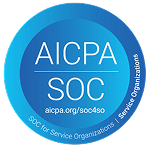FAQs
 Can Indian students get loans without a cosigner?
Can Indian students get loans without a cosigner?
Yes, some lenders specialise in offering no-cosigner loans to Indian students. These loans often require a strong academic background or enrolment in high-demand fields like STEM.
 Do international student loans cover living expenses?
Do international student loans cover living expenses?
Many loans cover not just tuition but also living expenses, including housing, food and transportation. Be sure to confirm this with your lender before applying. For Indian students, it’s important to factor in the cost of living in your destination city, as it can vary significantly.
 How do I apply for an education loan as an Indian student?
How do I apply for an education loan as an Indian student?
The application process typically involves providing proof of admission to a U.S. or Canadian institution, financial documents, and potentially a cosigner (if required). For no-cosigner loans, your academic and professional potential will also be evaluated. Indian students should also have their passport and visa documentation ready as part of the application process.
 What are my repayment options after graduation?
What are my repayment options after graduation?
Repayment options vary from one lender to the next, but some loans offer a grace period after graduation before payments are due. Some lenders also offer income-based repayment plans, which adjust payments based on your salary. Indian students should consider the currency exchange implications when planning for repayment, as you’ll likely be earning in dollars but may eventually return to India.
